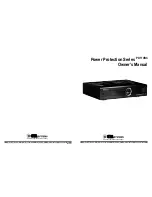
the incidence of a fault, as a consequence of incorrect switching and when CT saturation takes
place. Since the currents during power swings are sinusoidal and do not contain a DC
component, it is permissible to assume that the problem of CT saturation does not arise.
Zero-crossings resulting from the slip are in any event excluded by the current enable setting
of I
min
.
5.2
Definite time over- and undercurrent protection 51
(OCDT)
5.2.1
Mode of operation
GUID-01B16DD6-3FA9-4079-9390-9204C842DAD9 v1
Over- and undercurrent function for:
•
phase fault protection
•
backup protection
•
or for monitoring a current minimum
5.2.2
Features
GUID-0F07ECF4-7210-44FF-A17D-97F403D140FB v1
•
Insensitive to DC component
•
Insensitive to harmonics
•
Single or three-phase measurement
•
Maximum respectively minimum value detection in the three-phase mode
•
Detection of inrush currents
5.2.3
Inputs and outputs
5.2.3.1
CT/VT inputs
GUID-F644DFAA-0B84-4353-9F19-FE8FD67FE590 v1
•
Current
5.2.3.2
Binary inputs
GUID-AB3D1639-2EDC-4AE9-BE1B-DD3EA05AA4F9 v1
•
Blocking
5.2.3.3
Binary outputs
GUID-C0E2CC33-55E1-4C4F-84A0-CD307A90DA0A v1
•
Pick-up
•
Tripping
5.2.3.4
Measurements
GUID-AFB5BC3C-9DB7-450E-9C49-4CB7196297F7 v1
•
Current amplitude
1MRK 505 406-UEN B
Section 5
Bay protection functions
Bay protection functions REB500
91
Technical manual
© Copyright 2019 ABB. All rights reserved















































